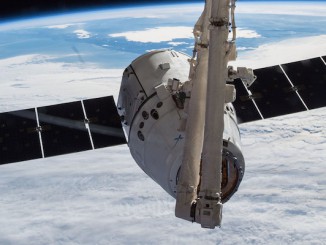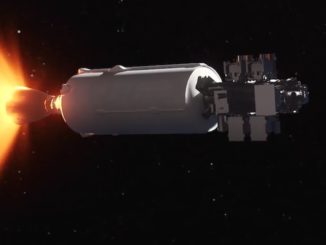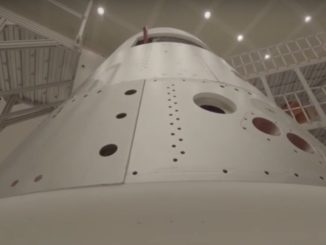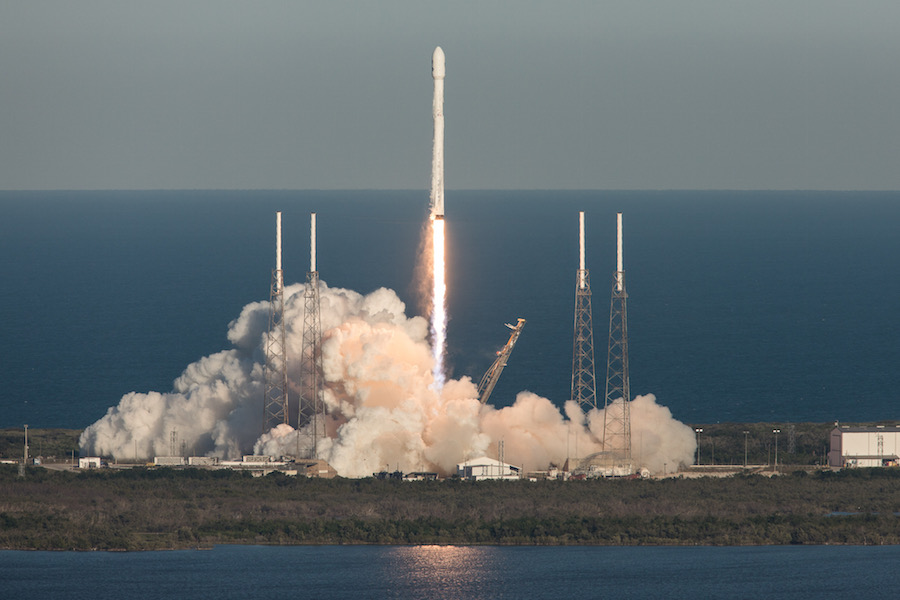
NASA’s Transiting Exoplanet Survey Satellite, built to find planets around other stars that are close enough for detailed follow-ups by future telescopes, launched Wednesday into a unique high-altitude orbit on top of a SpaceX Falcon 9 rocket from Cape Canaveral.
The $337 million mission is the latest in a line of space-based observatories designed for exoplanet research, building on discoveries made by NASA’s Kepler telescope and laying the foundation for missions set for launch over the next decade.
TESS lifted off aboard a Falcon 9 rocket from Cape Canaveral’s Complex 40 launch pad at 6:51:30 p.m. EDT (2251:30 GMT) Wednesday, heading for an arcing elliptical orbit that will take the spacecraft more than two-thirds the distance to the moon.
The 229-foot-tall (70-meter) Falcon 9 rocket thundered into a clear evening sky over Florida’s Space Coast with 1.7 million pounds of thrust, departing to the east over the Atlantic Ocean, where the launcher’s first stage descended to a SpaceX landing platform parked a few hundred miles east of Cape Canaveral.
While the first stage made its away back to Earth for refurbishment and reuse — potentially in late June on SpaceX’s next space station resupply flight — the Falcon 9’s second stage engine drove the 798-pound (362-kilogram) TESS spacecraft into a transfer orbit that was targeted to range from a low point of 154 miles (248 kilometers) as far as 168,000 miles (270,000 kilometers) from Earth at its highest point.
SpaceX and NASA officials said the Falcon 9 rocket achieved an on-target orbit before deploying TESS less than 50 minutes after liftoff, while the spacecraft soared over the Indian Ocean west of Australia.
A few minutes later, engineers confirmed TESS extended its power-generating solar panels to a span of 12.8 feet (3.9 meters) tip-to-tip. The satellite started charging its batteries as designed, while ground controllers at Orbital ATK, which built the TESS spacecraft, ran it through a post-launch health check.
Officials said TESS was performing as expected late Wednesday evening.
“We are thrilled TESS is on its way to help us discover worlds we have yet to imagine, worlds that could possibly be habitable, or harbor life,” said Thomas Zurbuchen, associate administrator of NASA’s science mission directorate in Washington. “With missions like the James Webb Space Telescope to help us study the details of these planets, we are ever the closer to discovering whether we are alone in the universe.”
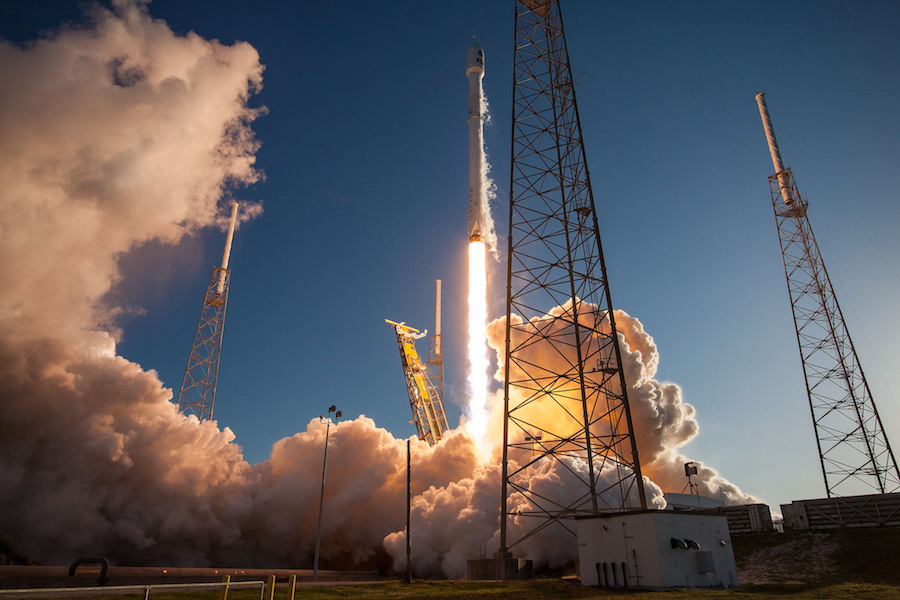
After a five-day checkout of the spacecraft, ground controllers will kick off procedures to switch on TESS’s cameras, with “first light” from the observatory expected next week.
TESS will scan around 85 percent of the sky during its two-year mission, and astronomers predict the mission could detect as many as 20,000 undiscovered planets lurking around stars in our solar neighborhood.
Carrying four 16.8-megapixel cameras, TESS will look for dips in light coming from some 200,000 relatively bright, pre-selected nearby stars. The periodic blots, if found to occur in a repeating pattern, are a tell-tale sign of a planet transiting between its host star and the telescope.
The craft’s four imaging cameras each cover a square in the sky that measures 24 by 24 degrees, wide enough to fit the constellation Orion into the field of view of a single camera. The cameras together will simultaneously survey a 24-degree by 96-degree strip of the sky for 27 days, then move on to stare at another sector of the sky.
TESS will search for exoplanets from a unique orbit in a 2:1 resonance with the moon, following a loop that takes it as close as 67,000 miles (108,000 kilometers) from Earth, and farther than the moon at its most distant point.
Such an orbit has three key advantages: It’s stable, using lunar gravity to maintain its shape without the need for maneuvers; It passes close enough to Earth to transmit full frame images through a high-speed Ka-band downlink; It keeps TESS away from the damaging effects of the Van Allen radiation belts.
“The orbit takes 13.7 days to go around once, so we do actually two orbits for every lunar orbit,” said Padi Boyd, an astrophysicist at NASA’s Goddard Space Flight Center who serves as TESS’s deputy project scientist. “It swings out very far past the moon at its farthest point, then when it comes back in towards the Earth it’s going very quickly and that’s when it dumps the data.
“So we’re only going to get one data dump every 13.7 days, and then it takes a tremendous software effort to analyze those images and look for these transit signals,” Boyd told CBS News in an interview.
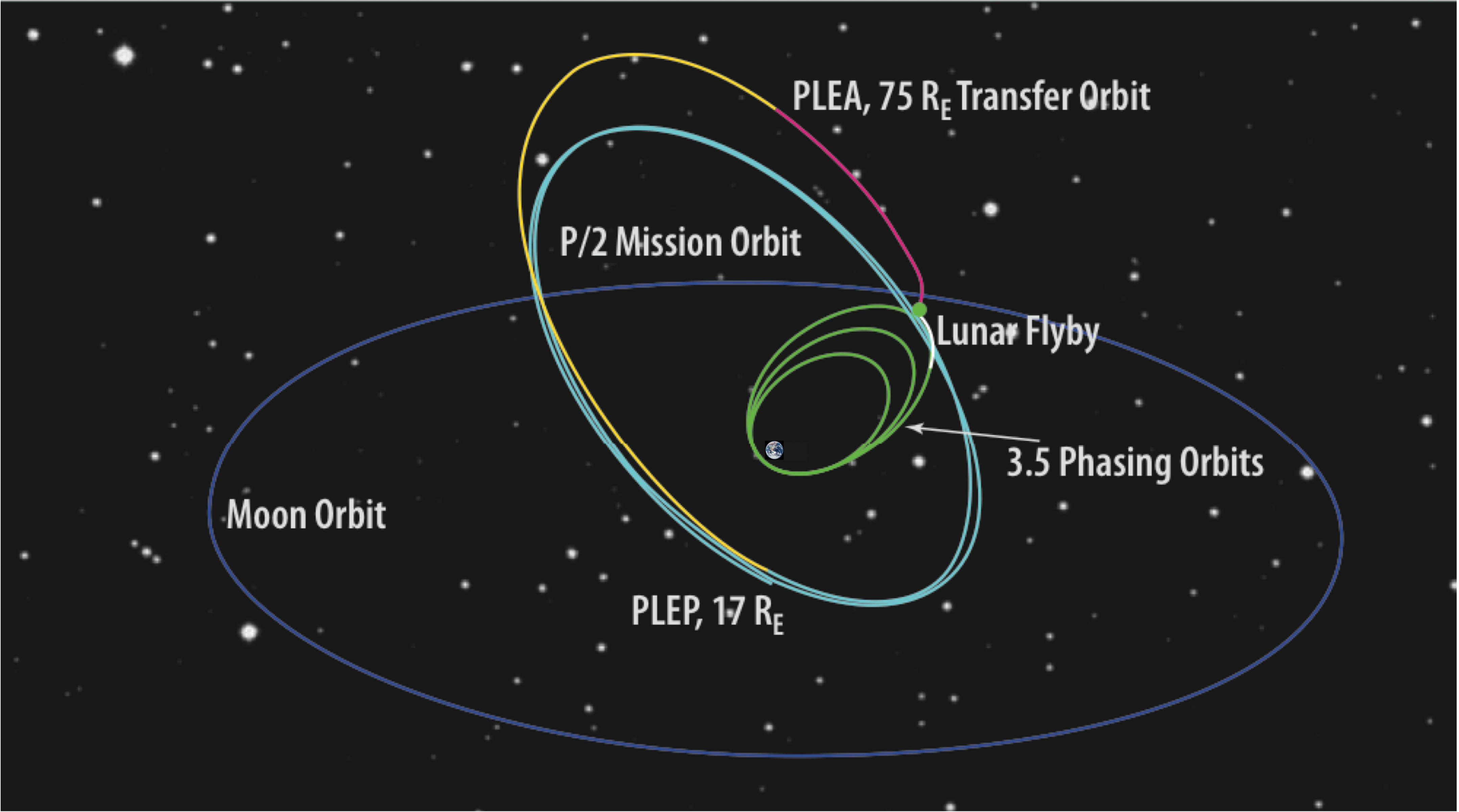
With the stability of the mission’s final science orbit, TESS has enough fuel to keep up its exoplanet hunt for as long as 20 or 30 years, assuming NASA funding and spacecraft components remain robust.
Reaching TESS’s unique observing orbit, known as a P/2 orbit, requires time and finesse.
The compact spacecraft’s on-board propulsion system will raise TESS’s orbit in the coming weeks to set up for a flyby of the moon May 17.
TESS will slingshot by the moon at a distance of around 5,000 miles (8,000 kilometers), using gravity to reshape its orbit, increasing the satellite’s orbital perigee, or low point, to the final planned altitude of around 67,000 miles. After the lunar flyby, the high point of the satellite’s elongated orbit will stretch well beyond the moon, and another thruster firing will nudge TESS into its final science orbit in mid-June.
The collection of science data is scheduled to begin in July, with the first year of TESS’s two-year campaign aimed at stars in the southern sky. In 2019, TESS will start looking at stars in the northern sky.
George Ricker, who leads the TESS science team at MIT’s Kavli Institute for Astrophysics and Space Research, said the exoplanet surveyor is a “finder scope” for the Webb telescope and huge ground-based observatories.
TESS will primarily look at M-dwarf stars, which are smaller and cooler than the sun, and make up the majority of the stars in the Milky Way galaxy. Also called red dwarfs, the stars that are TESS’s focus have not been thoroughly investigated to determine whether they harbor their own solar systems.
The observatory’s wide-angle cameras are only about 4 inches (10 centimeters) in size, giving TESS a tiny fraction of the light-collecting power of a telescope like Webb, which is scheduled for launch in 2020 with a 21.3-foot (6.5-meter) primary mirror.
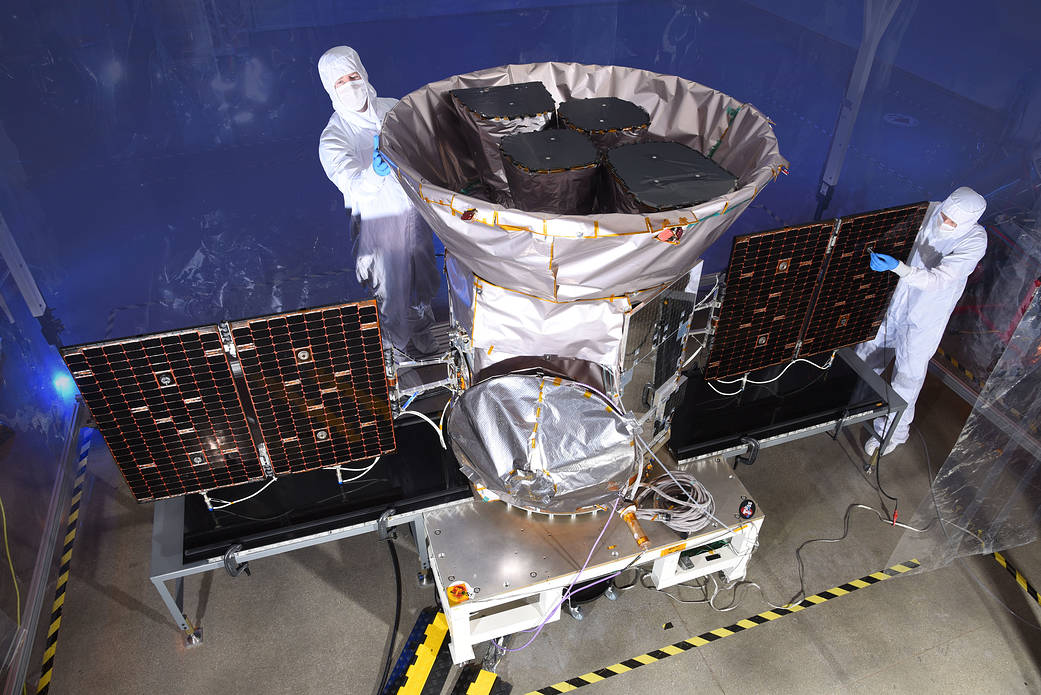
The planets found by TESS will be prime candidates for further study by JWST because they will be relatively nearby. The bulk of the more than 2,600 planets discovered by Kepler are located between 300 and 3,000 light-years away — too far for composition measurements with current technology — while TESS will look at stars 10 times closer and 100 times brighter.
In addition, Kepler has only pointed at certain parts of the sky, while TESS will take a broader look.
“You can go out on a dark night, and you can see 6,000 stars or so in the sky with your naked eye,” Ricker said. “We’re going to look at every single one of those stars.”
Approximately 20 million stars will be visible by TESS’s light-sensitive cameras, including targets up to a million times fainter than observable with the naked eye, Ricker said. Around 200,000 of those stars are “pre-selected” by the TESS science team for special emphasis because of their proximity and brightness.
The TESS observatory will “build upon the legacy of the Kepler mission, only it is going to focus on nearby bright stars that are sprinkled across the whole sky, and it’s going to help us answer a really important question: Which of our nearest stellar neighbors have planets?” said Elisa Quintana, an astrophysicist and TESS mission support scientist at NASA’s Goddard Space Flight Center in Maryland.
Each of TESS’s cameras house four custom-built red-sensitive CCD detectors designed and developed by MIT’s Lincoln Laboratory.
“I think it’s fair to say that the CCDs that TESS is flying are the most perfect CCDs that have ever been flown on any science mission, NASA or otherwise,” Ricker said.
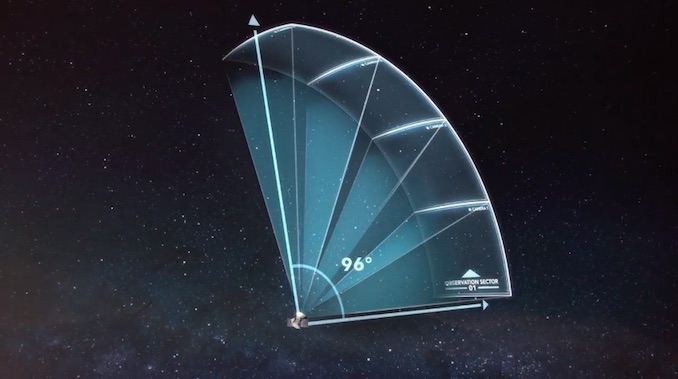
“TESS is a survey machine, and it’s going to find the very best planets for us to follow-up, and among that category are these small rocky planets, transiting small red dwarf stars,” said Sara Seager, deputy science director on the TESS mission at MIT.
Data from TESS will tell astronomers the size of each planet. With that information, they can use other techniques like radial velocity measurements to determine each planet’s mass and density.
“Measuring masses is a really big deal because the planet mass is really definitive,” Seager said in an interview with Spaceflight Now. “Is it a rocky planet like Earth with a thin atmosphere? Is it a giant planet like Jupiter or Neptune that has a huge gas envelope?”
Ricker said he expects TESS to find between 500 and 1,000 planets that are between one and three times the size of Earth. Up to 20,000 planets the size of Neptune or Jupiter could be discovered by TESS, he said.
That would grow the number of known planets beyond our solar system by factor of five or more, but it’s not all about expanding the exoplanet catalog.
“The focus that TESS has on finding systems associated with bright stars means that they will be much easier to follow-up,” Ricker said in an interview with Spaceflight Now. “Once you find that a transiting system exists, it’s something that you’ll want to come back to and study more and more as improved instruments, satellites and telescopes become available because this is going to be the benchmark for future research.”
That’s where the James Webb Space Telescope becomes a crucial tool for astronomers seeking to learn more about the nature of faraway exoplanets. JWST will be able to probe the atmospheres of some of these worlds, learning about their chemical make-up and searching for evidence that the planets might be habitable.
Once launched, the huge, expandable observatory “will be able to look for characteristic signatures of materials in the atmospheres of those planets … and something that’s potentially a biogenic signature,” Ricker told Spaceflight Now. “Of course, that takes a lot of care and a lot of work. TESS can only point the way to these are the best targets that you should be focusing on with Webb.”
Email the author.
Follow Stephen Clark on Twitter: @StephenClark1.

